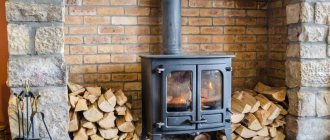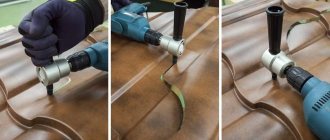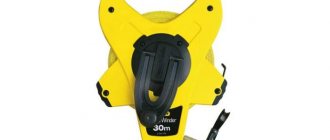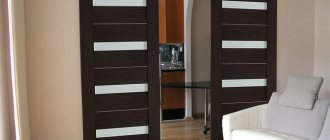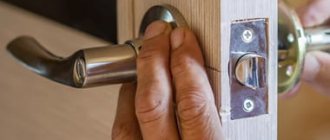A real owner must have installation tools and know how to use them. One of those most important tools is a jigsaw. Chips often occur when working with it. To avoid this, you need to understand the reasons for the appearance of chips, how to work with a jigsaw on various materials, and read tips on modifying the tool for high-quality cutting.
Reasons for chipping
If you observe the process of chipping, you can discover a pattern: when sawing from top to bottom, the teeth of the file do not saw through the material and do not form chips as they come out of it. When the process proceeds from bottom to top, the teeth catch and form kinks.
In a wooden material, fibers located in the vicinity are caught, and in laminated chipboard, the coating and chips are caught. If you try to saw two layers of laminated chipboard at the same time, the layer located below will be sawn efficiently, since the layer on top prevented the formation of chips.
An increase in processing accuracy will be provided by the “Soft Start” option, in which the jigsaw gradually picks up speed, and the cut itself proceeds as expected. Move the tool slowly. It is necessary to continuously visually monitor the position of the cutting point and marking.
How does a jigsaw work?
The base is an electric motor from which the force is transmitted to the band saw (jigsaw). The drive is a pendulum type; the saw blade itself is held by a support roller, which also takes on most of the mechanical load. The cut itself is performed when the saw moves upward; when moving downward, it “bites” into the material. To protect the operator when working with the tool, a support plate is installed at the bottom of the jigsaw, which also acts as a guide for obtaining an even cut.
Some models also provide a pendulum stroke, that is, when the saw blade moves not only up and down, but also a little to the right and left (used to make cuts). But it makes sense to buy such models only for those who are engaged in figured cutting of wood; with denser materials, the presence of a pendulum motion does not make sense.
Methods of working with a jigsaw without chipping on various materials
The jigsaw is suitable for processing a large number of products (wooden, metal, tin, plastic surfaces). For each type, there are specific methods and tool settings: a certain stroke rate, pressure force, smooth movement of the device.
Wooden canvas
When choosing a saw, remember that the wood must be cut with standard tools (with the teeth facing up). The size of the teeth is average, and the pitch interval is from two and a half to four millimeters. The length of the file depends on the thickness of the surface being cut.
The stroke frequency must be set to the maximum value. You need to reduce it if the material tends to overheat or you feel inconvenience while working. To increase the cutting speed, you need to use the pendulum function. The quality of sawing is reduced, but this option significantly reduces work time if you don’t have much of it.
During the process, it is necessary to carry out all operations on the back side of the canvas to avoid damage. Marking must be done in advance. When sawing begins, you need to press the jigsaw against the blade and slowly control the direction of its movement. You should not push the tool, as it will move along the canvas on its own.
Laminate and chipboard
When choosing a file, you need to choose a variety such as a reverse cut file. Even with vibration characteristic of this type, the quality level of the result will not be reduced. Using an ordinary file, it is necessary to carry out the operation on the back side of the blade.
The stroke rate, as in the previous paragraph, should be maximum. To avoid chipping, the pendulum mechanism should be turned off. During the process, the jigsaw should be pressed firmly and gradually moved along the blade (there is no need to press the tool hard).
Chips occur on the side facing the tool. In this regard, when using a regular saw, you need to determine the front side in advance and cut on the back. In addition, you can purchase a special anti-splinter insert - a small element with a cut, which is inserted into the corresponding guides in the sole. The best option for an insert is one with a cut that exactly matches the thickness of the file.
Metal
When choosing a file for metal, you should give preference to options with small teeth, the pitch of which should be in the range of one to two millimeters. The stroke rate indicator should be set as low as possible and should be turned off.
When using, do not press the tool, but move it smoothly. The blade itself should be secured, while placing its cutting line as close as possible to the support. Be sure to take short breaks and use a cooling system to prevent the tool from overheating.
If it is necessary to make a curved cut on a thin sheet of metal and place the cut line tightly to the support, the metal should be placed between two sheets of fiberboard. In this case, it is necessary to mark the top fiberboard layer, since this will prevent the formation of burrs.
Plastic
It is worth choosing a file with a small tooth, as this will improve the quality of work. The jigsaw should be adjusted based on the type of plastic. The evenness of the cut will ensure a minimum or complete absence of pendulum motion. The stroke frequency should be no more than 40% of the maximum value.
Tile
You need to prepare a file without teeth and apply abrasive to it. The pendulum stroke must be turned off and the speed reduced to minimum. In this case, a jigsaw is one of the effective devices for cutting out curved elements on tiles.
Tin
To easily cut tin material, you need to attach it tightly. The canvas should be laid from the edge of the workbench or placed on a backing. In this case, the cutting line should be at the shortest distance from the provided support. It is necessary to press down the material with a beam so that nothing hinders the freedom of movement of the jigsaw.
"Swap" should be set to o or "1". The file used must be designed exclusively for metal. If the blade being processed has a thickness of more than two millimeters, then it is better to lubricate the cut area with oil (for machines). For a good result, the tin sheet must be laid between thin plywood. This will make it possible to work far from the support line, which is important in conditions of curved cutting.
What is the maximum thickness that can be cut?
For marketing purposes, it may be stated that these tools can cut steel up to 20 mm thick and soft metals up to 30 mm. Perhaps if you buy a hundred blades and spend a week of time.
In reality, if necessary, you can cut through several tens of centimeters of steel up to 10 mm thick and soft metals up to 20 mm at a time. In rare cases, when necessary, you can make a short cut to the entire depth of the blade.
Application of adhesive tapes
Adhesive tape (for example, ordinary tape) is used to protect the back side of the material. It is necessary to glue a tape to the cut line to protect the processed fabric from tearing off large elements. Masking tape cannot be called a very effective option for preserving material when cutting with a jigsaw, since its strength indicator is extremely low.
A fairly wide (each side of the cut material should be covered by at least fifteen centimeters) aluminum or fiberglass reinforced tape is best suited. In addition, the adhesive tape must be pressed with a dry cloth to eliminate the risk of wrinkles.
Choosing a tool
At home, you can cut plywood with both hand and power tools.
Power tools for cutting plywood:
- circular (circular) saw,
- jigsaw
Less commonly, but still can be used for cutting plywood, power tools such as grinders or band saws.
| * Rice. 1.a. Cutting plywood with a circular saw | Rice. 1.b. Cutting plywood with a jigsaw |
* All images are taken from open sources and are provided as examples and illustrations. And are not subject to copyright of our company. If you find your photos here and want to delete them, write to us.
A few words about circular saws
Among the advantages of a circular saw, we note, for example, the ability to cut several sheets of plywood, chipboard or fiberboard (stacked) at once. And also the fact that circular electric saws allow you to cut both thick and thinner sheets of plywood.
The disadvantages of disk tools include the difficulty of obtaining geometrically complex cuts and parts made of plywood. This cutting method is mainly suitable for straight line cutting.
Jigsaw for plywood - ideal for the home craftsman
However, at home, more “piece” or even small shaped work is often in demand. For which a regular manual or electric jigsaw is quite suitable. The latter, of course, significantly speeds up and facilitates the process of cutting plywood sheets.
Hand tool for cutting plywood:
If we talk about hand tools, then for straight and long cuts special hacksaws for plywood and chipboard can be used. For example:
Rice. 2. Hand hacksaw for plywood and chipboard.
Such hacksaws and saws are usually made of spring steel** with the so-called. reverse teeth. And they can be additionally equipped with materials that are harder than the main saw blade.
** Spring steel is a medium- or high-carbon steel, products from which have the ability to easily return to their original shape (despite significant bending and twisting). What happens due to the high yield strength of this type of low-alloy alloys.
If you plan to cut fairly small and geometrically complex parts or shaped workpieces from plywood, then you will, of course, need a jigsaw using a hand tool. Something like this:
Rice. 3.(a). Straight cutting from plywood with a hand jigsaw
Rice. 3.(b). Sawing out shaped parts from plywood with a hand jigsaw
Hand tools or electric?
Let us however note that sawing plywood with hand tools in some cases may not be a very pleasant procedure. The layered structure of plywood with wood fibers in different directions in these layers makes the process quite complex. You won't cut much like that.
Therefore, when choosing how to cut plywood at home, we recommend choosing a modern electric tool. Among which, it seems to us, the most versatile for working with plywood is a jigsaw.
Reworking the jigsaw sole
When setting up a jigsaw, you first need to check the perpendicularity of the sole, since sometimes the clamp is not firmly fixed. Specialists often modify the sole of the tool, that is, they reduce the gap between the leg and the pressure pad. This eliminates "breaking" of the crust in the layers of material on top.
Read also: Three-pin button with backlight connection diagram
When using pads, it is important for every novice craftsman to remember that they should not scratch the surface of the part. In this case, they need to be replaced every five meters of cutting. Zero clearance can be achieved by attaching the cover plate to the jigsaw support leg.
The lining has only one narrow slot that fits tightly to the cutting element. Therefore, even a weak feed of the teeth can cut off small chips, and not turn out the chips of the top layer. The highest quality pads, which are guaranteed to last you a long time, are usually made from:
- sheet plastic;
- metal material;
- fiberglass.
Which jigsaw to choose
In order for the hobby to bring joy and not to have to adjust and tighten something every five minutes, you should approach the choice of tool with all the attention and responsibility. https://www.youtube.com/embed/j84rY2QKhZI
Despite the apparent simplicity of the design, a manual jigsaw has many nuances that must be taken into account when purchasing.
- Frame material. It is better to put aside the strip metal jigsaws. They are prone to twisting and distort the blade during cutting. A frame made of a metal tube does not have this drawback; it holds its shape perfectly and is also noticeably lighter.
- Lever. Be sure to check how firmly the handle is attached to the frame. If she constantly jumps off, the process will turn from pleasure into torture. Over time, sawing masters replace the cylindrical handle, turned on a lathe, with an individual one, carved from soft wood, taking into account the anatomical features of their hand.
- Clamps. Holding the saw securely during the cutting process is not only a matter of convenience, but also of safety. Good clamping areas are equipped with notch systems perpendicular to each other to ensure secure retention of the blade shanks.
- The wings of the clamps should have wide, high and comfortable ears. Avoid wing nuts stamped from sheet metal or replace them with tall wing nuts with the same threads.
Ensuring a clean cut
In many cases of material processing, the size of chips can be reduced to half a millimeter. Such minor imperfections are not noticeable; they can be removed by chamfering with sandpaper or covering up the chips with a correction pencil. You can also sand the end with sandpaper or cut through the top layer of the surface with a utility knife.
To begin, make 2 cuts half a millimeter deep on both sides of the part, indicating the thickness. Two grooves should be marked along the edges of the cut, which can be done using an oblique shoemaker or segment knife (for uncoated wood material or chipboard), or using a sharp drill and a pobedite cutter (for laminate).
Additional jigsaw functions
Jigsaws are equipped with additional functions; new items among these tools have the largest number of them.
Mainly:
- Forced airflow;
- Smooth start;
- Laser type pointer;
- Types of cartridges;
- Backlight;
- Power stabilization under increased loads.
Correction of chips that have arisen
Cutting material using a jigsaw and avoiding chipping is almost impossible. You can do this: cut the part with a jigsaw with a small allowance (2 mm), and then mill or grind off the allowance with a belt sander. When milling, the edge is cleaner than when working with a grinder. Usually, the material is milled using a self-made guide bar (modeled on a circular saw guide). Spiral cutters will improve the quality of milling. It is necessary to prepare them in the amount of two pieces.
If you need one front side to remain clean, you need to use an ordinary two-flute cutter. If you need both clean sides, then you should use a four-flute cutter with two main branches, which have a left direction, and two scoring branches, which have a right direction. Then it turns out that when cutting material, the upper branches press the material down, and the lower ones pull it up. This prevents chipping on the edges.
Laminated chipboard is one of the most widely used materials used in the independent manufacture of furniture. We can talk about its advantages and disadvantages for a long time. But it is much more important to learn how to cut laminated chipboard with a jigsaw without chipping.
Shape cutting technologies
Jigsaw
As we noted above, a jigsaw will come in handy if we are looking for how to cut a word out of plywood or make other parts of complex shapes:
We transfer pre-printed drawings or templates onto the workpiece using carbon paper.
Figured carving with a jigsaw: photo of the finished product
- If the structure has through sections, we make starting holes with a thin drill.
- Insert a file or jigsaw blade into the hole. Secure the free end of the file with a fastening screw or clamp.
- We make a cut along the intended line, pressing the workpiece to the workbench. The saw moves either automatically (for electric jigsaws) or manually.
After all the arc elements have been sawn, we remove unnecessary areas and process the finished part with a file or sandpaper.
Finished hole
Fraser
A furniture router is great for cutting out thick plywood. Of course, you can’t make a complex shape with it, but cutting an arc or circle is easy:
- We fix the standard ruler included in the router in the center of the circle using a self-tapping screw.
- If the length of the ruler is not enough, you can assemble a simple bracket from a metal profile or wooden planks.
- By rotating the cutter along a fixed radius, we select a groove along the circumference, resulting in an almost perfect hole.
Bracket for router: with it you can cut a disc of almost any diameter
In this way, you can cut not only circles, but also individual arcs - for example, in order to make grooves for furniture brackets.
Using improvised means
For shaped elements, it is advisable to have special devices, but any craftsman may need to make a round hole in a slab of laminated veneer. Below we will tell you how to cut a circle from plywood when you have nothing at hand. Well, almost nothing:
- To cut plywood, use a wooden strip with two nails.
- One nail is driven through the strip into the workpiece, exactly in the center of the hole being made.
- We drive the second nail into the bar so that the point protrudes on the wrong side by at least 5-10 mm. The distance from the first nail should be equal to the radius of the hole being made.
- Rotating the bar, use the tip to draw a groove on the plywood, deepening it with each turn.
- Instead of a stick, you can use a strong cord. The operating principle remains unchanged.
Diagram of "threading" using nails. The sharper the nail used, the faster the hole will be made. It should be noted that although the price of such a device is low, it is worth using it only when other methods are not available: the edges still turn out to be far from ideal.
Features and Recommendations
Experts and experts advise performing this kind of work using electric jigsaws simply because a regular hand saw is too rough. It does not allow cutting the material evenly enough. The correct sequence of steps is:
preparing tools (ruler, jigsaw, measuring tape, awl or other sharp device for drawing on chipboard);
supplementing these tools (if necessary) with a square for laying right angles;
measuring the required part (with a reserve of 0.2 cm so that it can be adjusted);
drawing a line along a ruler;
actually, cutting along the laid line;
refining the cut area using sandpaper;
if the quality of the end is very poor, rub it with chalk, similar in tone to chipboard.
Is it possible to make a stationary jigsaw from a jigsaw?
Professional-grade jigsaws have holes on the support platform that allow you to securely and safely secure the device to the frame. In this case, the tool can be used to create an electric jigsaw.
The key difference between a stationary jigsaw and traditional manual models is the method of processing workpieces . In stationary technology, the workpiece moves relative to the saw blade. A classic manual electric jigsaw needs to be moved relative to a stationary workpiece.
The good thing about an electric jigsaw is that it allows for high-precision processing of workpieces . For this purpose, the workpiece is fed using special guides and a movable carriage.
If we speak for ordinary manual jigsaws for metal, errors involuntarily arise when pushing and directing the device, which does not allow processing workpieces with increased accuracy.
How to choose a jigsaw.
What else do you need to know?
When you plan to saw off everything without chipping on one side, it is permissible to use files with both upper and lower teeth. Most craftsmen prefer small files with straight teeth. Such devices chip less material, but still work quite well. After cutting, it is best to process the ends with emery stretched over even bars. If you don’t have a ready-made crayon of a suitable color, you can mix different crayons, like paints in an artist’s palette, and get a new color.
To cut without errors and quickly, you must always take into account the brand markings. There is no generally binding designation standard yet, but almost all companies strictly follow the classification developed by Bosch specialists. Or at least they list it along with their own abbreviations and terms. CV saws (sometimes referred to as HCS) are well suited for cutting wood and wood-based products.
Hardwood files are intended for processing laminated panels (they are also useful, note, when processing hard wood).
Some inscriptions indicate in which mode the tool works optimally:
basic - a simple blade that allows you to make a clean cut of high quality;
speed - a device whose teeth are set apart (this allows you to cut faster);
clean - a blade that has not been cut (usually gives the cleanest cut).
If the workpiece is relatively thick, it is preferable to have a saw blade with large cutters that are not set apart, then the deviation from the vertical will be minimal. A longitudinal (relative to the fibers) incision is most often made with helical saws. For a transverse one, a straight blade is better suited. When you plan to make a piece of furniture, it is advisable to choose a less productive, but more accurate tool. Since most saws produced today cut the material as it is pulled in, the workpiece will need to be processed from the inside out.
Beware - fake!
Modern manufacturers offer a huge range of replacement materials for power tools and mechanical jigsaws. The average cost for a set of products from well-known brands or new ones can differ tens of times.
It should be remembered that trusted companies value their reputation and monitor the quality of the consumables they produce. Large manufacturers offer a range for amateurs and professionals. But even budget options have excellent performance characteristics.
Care when purchasing will reduce the likelihood of making the mistake of choosing counterfeit files from well-known brands:
- a counterfeit blade made from low-quality raw materials may have chips, minor damage or traces of rust;
- clear edges of the blade are possible with high quality production; the rounded end part indicates a violation of the process during underground stamping;
- blurry, distorted inscriptions are easily erased;
- no branded packaging;
- low price compared to the original product.
The fake quickly wears out and breaks. A counterfeit accessory can damage the workpiece or cause injury to the craftsman. Therefore, how much the product costs is not decisive when choosing equipment.
Completing of the work
When the file has been selected, you still need to correctly saw the laminated board at home. Experts recommend sawing along a guide (a rail clamped in clamps will also work). If you use a new, unworn blade, you can cut chipboard as cleanly as you would with a circular saw. It is advisable to turn on the jigsaw at the lowest speed possible. This will significantly increase the resource of each file used.
The blades themselves are placed at right angles to the jigsaw sole. The easiest way to adjust the angle is with a square or protractor. Important: the straight line passing through the cutting edge of the tool must be parallel to the rigidly fixed part of the jigsaw. It is recommended to use special inserts that reduce the likelihood of splitting. But to make them work more efficiently, they usually cut the laminated layer on the side where the blade will come out.
To learn how to cut laminated chipboard with a jigsaw without chipping, see the following video.
A jigsaw is essentially a universal tool that allows you to make straight and shaped cuts in a wide variety of materials - from soft wood to steel and glass. However, the tool itself is universal, but not its equipment: each task requires a certain type of saw blade. To understand how to choose jigsaw files in each specific case, you need to figure out what criteria to use when choosing, how some blades differ from others, and how to guess this from their markings.
Read also: Three-position switch
When you come to the store and look at the counter with jigsaw files, you will find that they are all very different. They differ not only in the length, width and thickness of the blade, but also in the size of the teeth, the geometry of the cutting edge and the type of tail. In this material we will look at what types of jigsaw files there are, their features and selection parameters.
Rating of the best files for electric jigsaws
Manufacturers of jigsaws are interested in ensuring that their tools work efficiently. Therefore, many brands themselves produce files for electric jigsaws. Moreover, they are suitable not only for the instruments of these brands, but also for others.
Makita and Bosch are considered leaders in quality. In terms of sales and popularity on Yandex.market and other platforms, Makita is the leader. Bosh is in 3-4th positions. But not because of worse quality, but because of a significantly higher price. If a set of 5 files from Makita can be bought for 380-400 rubles, then Bosch files cost from 600 rubles.
Original Bosch files are of high quality.
Hammerflex files are also popular.
Types of jigsaw blade shanks
The first thing you should pay attention to when choosing a jigsaw file is the type of shank. And this is logical: if your tool is not designed to work with this variety, then you simply will not be able to use the new blade. There really aren't that many options:
T-shank.
It is often called “Boschevsky”, since it was this company that developed files with this type of shank. Since BOSCH is the market leader in jigsaws and accessories for them, and other industry giants are trying to switch to this standard, it is not surprising that T-shank files are currently the most common. The T-shank fits most modern jigsaws - Bosch, Makita, Metabo, Hitachi, Skil, AEG, DeWalt, Sparky, Interskol, etc.
U-shank.
The second most popular type of shank is the American standard. This is a universal shank for older models of jigsaws Skil, DeWalt, Wolf, Ryobi, Stayer, Black&Decker, etc. These files are suitable for all jigsaws with block and screw clamps.
Makita shank.
Files with this shank are only compatible with older Makita jigsaw models.
Bosch shank.
It differs from the T-shank only in the presence of a second stop. These files are only suitable for older Bosch models.
The last two types of shanks can already be classified as rarities. Finding such files in domestic stores today is almost impossible.
Should you pay attention to the brand?
The brand of the jigsaw blade is of great importance. There are many manufacturers around the world willing to enter this consumables market. Among them are semi-handicraft industries that produce inoperative dummies of blades that cannot even cut wood.
Only a large manufacturer is able to establish a continuous production of high-quality products in compliance with all technological standards and quality control at all stages. The most popular of them, which have earned a good reputation for quality, are Bosch, Makita, and some others.
File sizes
Canvas length . The length of the saw blade can vary over a fairly wide range - from 40 to 250 mm. The longer the file, the thicker the workpiece it can cut. It should be borne in mind that the actually achievable depth of cut depends not only on the length of the blade, but also on the capabilities of the tool itself. For sawing thin materials, it is better to use short files: their use guarantees a neat, clean cut, because the process is not hampered by the deformation of an excessively long canvas.
Web width . The width of the blade is selected depending on the type of operations that are supposed to be performed using a jigsaw. Wide saw blades are ideal for straight cuts: they are easier to guide in a given direction, which means the cut line is smooth.
For curly cuts, on the contrary, you need a blade with a narrow back, which makes it easier to perform various maneuvers, “drawing” smooth curves.
Thickness of the canvas . And finally, the thicker the file, the less it will deviate from the vertical position during operation, i.e. the cut along its entire length will be perpendicular to the surface of the material. However, in pursuit of a neat cut, do not forget that too thick files may not fit jigsaws with a quick-release mechanism.
The main parameters of canvases and what do they affect?
All main parameters are described above. Briefly about what determines each of the main parameters.
Shank types
The shape of the shank must match the model; for example, a file with a U-shaped shank cannot be mounted in a jigsaw designed for T-shaped files.
Sometimes it happens that thick files with a suitable shank do not fit into the fastening groove. This occurs on models with an auto-clamp (without threaded fastening). In such cases, take a thinner file, or slightly sharpen the shank on both sides.
Dimensions
The length of the files is divided into 4 groups from 75 to 150 mm. Each group is marked in the marking with a number from 1 to 4. When selecting the length of the file, proceed from the thickness of the material. At maximum reach, the end of the file should come out of the workpiece.
The longer the file, the more prone it is to move to the side. As a result, the cut may end up crooked. Short, thick files are less prone to bending and cut more accurately.
Saw blades of maximum length - 100-150 mm are used for cutting large-sized wood, soft and light materials such as polystyrene foam.
Tooth shape
Most teeth are shaped like a triangle with sharp corners. Their sizes, layout, and inclination may be different. In addition, there are blades with a wave-shaped cutting edge for soft materials and blades without teeth, with super-hard coating for ceramics, bricks and other hard materials. Here, a layer of diamond chips or tungsten carbide acts as a cutting surface.
Types of files according to cutting edge geometry
If you look closely at jigsaw files, you will notice that they all differ in the size of the teeth set and the geometry of the sawing edge. The more the teeth are set apart, the wider the cutting line will be, which increases the speed of work, although at the cost of reducing the quality of the cut. Not only the cleanliness of the cut depends on the wiring method, but also what materials this equipment can be used for working with.
Milled with classic layout.
Peculiarities . In files with a classic setting, the teeth are alternately bent in different directions, like in ordinary hand hacksaws. This arrangement helps reduce the heating of the saw during operation, since the blade experiences almost no friction in a fairly wide cut. It is almost impossible to get a neat cut with such a file, but the work speed will be high.
Purpose . The purpose of saw blades with milled teeth and classic settings is to quickly cut hard and soft wood, as well as plastic and non-ferrous metals.
Milled with wavy layout.
Peculiarities . In equipment with such a layout, the teeth do not change direction one by one, as in the previous case, but in groups of several pieces. Moreover, each tooth has a different deviation from the central axis than its closest neighbors - the working edge of the saw blade forms a wave.
Purpose . The purpose of saw blades with wavy layout is to make a clean cut not only on wood, but also on chipboard or plywood, as well as working with non-ferrous metals and plastic.
Polished with classic layout.
Peculiarities . The teeth of such blades are set apart and undergo a grinding process. The cutting line of such blades is quite wide.
Purpose . Saw blades with ground teeth, set in a classic way, are designed for quick but relatively clean cutting of wood and its derivatives - chipboard, fiberboard, etc.
With conical grinding without routing.
Peculiarities . The blades of such saws do not have a tooth spread, but their segments are ground, which ensures a thin cutting line and an even cut.
Purpose . Allows for accurate cutting of wood, laminate, and polymer materials.
How to cut correctly and evenly
The big drawback of jigsaws is that the blade tends to move to the side because it is secured only at one end. The following simple techniques will help you make a cut more accurately.
- Only sharp files are used. If the teeth are worn unevenly, the blade will make a cut with the sharp side and move towards this cut;
- optimal low speeds are selected (saw pitch strokes). The material is sawed at very high speeds of the cutting discs, but with slow movement of the saw blades. (The same applies to drilling).
At too low speeds, the engine will not be able to handle the load, and the saw will get stuck. If they are too high, the teeth will jump and quickly break or wear off.
You should forget about the experience of sawing wood when cutting metal for a while - it cuts at all differently, unusually slowly compared to wood.
The jigsaw is moved very slowly and smoothly, without jerking. When jerking, the saw will hit the metal, and it may break or the teeth will crumble. When the tool is pulled to the side, the file in the cut breaks.
On industrial machines, such cutting uses lubricating and cooling fluids (coolants). These are water emulsions of oils, you can use them, or regular machine oil. Better liquid (transformer, spindle).
Apply a few drops from an oil can to the file and the cut area. At the same time, from time to time you need to turn off the jigsaw and wipe off the sludge, a mixture of oil and metal filings with a rag.
On some materials, it is effective to lubricate the cut line with regular candles, paraffin or wax.
Classification of jigsaw files by type of material being processed
For wood and wood materials
Initially, the jigsaw was created to work exclusively with wood. Modern tools have learned to cut both metal and plastic, but their main purpose is still cutting wood and its derivatives. That is why most of the range of saw blades is designed to work with these materials. “Wooden” files are divided into groups according to the type of work for which they are intended.
Fast cut.
When carrying out certain types of work with wood, it is often not accuracy that is important, but the speed of the process. Saw blades for quickly cutting wood can provide high productivity. They are easy to recognize by the following characteristic features:
- long blade (from 60 mm),
- large teeth (up to 6 mm),
- large amount of separation (about 1 mm).
Tip: For sawing wood across the grain, blades with straight teeth are also suitable, but for longitudinal cuts, saws with oblique teeth are more suitable.
Clean cut.
Operations such as cutting furniture panels from chipboard or trimming parquet boards require a smooth and accurate cut. When solving such problems, where the quality of work comes to the fore, rather than productivity, clean cutting blades are used that have:
- average tooth size (no more than 3 mm),
- minor divorce.
Most files have teeth pointing towards the jigsaw. To ensure that the front side of the material after cutting chipboard or laminate is as neat as possible, without chips or burrs, the workpiece is placed with the back side facing you/the tool. To cut from the “face”, you need to use a blade with a reverse tooth. True, it is more difficult to work with this type than with a regular one - you have to overcome the force of pushing out the tool.
Read also: Harm of citric acid for a washing machine
Tip: A special saw with two rows of teeth allows you to cut panels laminated on both sides carefully, without chipping.
Curly cut.
It is almost impossible to cut a curve with a small radius with a regular wide blade. For figured cutting, specialized files are used, which, due to their size, easily pass rounded areas:
- narrow blade (no more than 4 mm),
- small teeth (up to 2 mm),
- short length (up to 40 mm),
- beveled back side.
For metal
It must be admitted that a jigsaw is not very suitable for cutting metal: the tool can hardly cope with the load, the process is very slow, and the files quickly become dull. However, sometimes this extreme method is justified.
Metal files differ from wood files: they are made of especially strong steel and have small (up to 1 mm) teeth, set in a wave-like manner. If you often use a jigsaw and at the same time perform a wide variety of work with it, we recommend keeping three metal blades on hand at once - separately for aluminum, other non-ferrous metals and steel. If you have to cut metal only from time to time, it will be enough to have only a steel file - it will certainly cope with cutting non-ferrous metal products.
For polymer materials
For cutting pipes and other PVC products, blades with large teeth designed for cutting wood or metal are suitable.
Fine-toothed saw blades will also cope with the task, but you will have to cut at a minimum speed, otherwise the plastic sawdust softened by the high temperature will clog the saw teeth. For thin sheets of plastic and plexiglass, metal blades with fine teeth are excellent. To cut thick plastic, you can take a wood saw and cut at low speed.
For specific tasks
Files intended for glass and ceramics are made of particularly strong alloys and have a diamond coating on their cutting edge or, more often, a tungsten carbide coating. Using a jigsaw to cut ceramic tiles or glass only makes sense if you need to cut out shaped elements; There are other, more suitable tools for direct cutting of these materials.
Drywall and other building materials containing abrasive particles of gypsum, cement or sand quickly dull any saws. The exception is saw blades designed specifically for these materials with carbide tips on the cutting edge.
A file designed for cutting cardboard, rubber and other soft materials is more like a knife. It is “toothless”, and its cutting edge is made in the form of polished waves.
Universal
Universal files, usually made of high-speed steel, are used to work with various materials - wood, plastic, metal. You should not expect high quality cuts when using them.
Types of hand jigsaws
Electrically powered hand jigsaws can be classified according to the type of power supply:
- Network (220 V)
- Rechargeable
The industry also offers hybrid jigsaws, that is, powered by both battery and mains power, but such devices are not widely used.
- Corded jigsaws are powered from a 220 (V) household power supply via a live wire with a plug. By powering the electric drive from a remote source, it becomes possible to significantly reduce the size and weight of the device . At the same time, network models demonstrate solid performance .
But the main advantage of 220 (V) jigsaws is their affordable price .
Of course, network models have a number of disadvantages, some of which are considered critical under certain circumstances. The presence of a power cord significantly limits the freedom of movement of the jigsaw . The wire can get tangled and interfere, which reduces safety and reduces overall production standards.
Additionally, the electrical network model cannot be used at facilities where there is no electrification. This problem can be solved using a generator, but in this case a number of related problems arise.
- Cordless jigsaws are completely autonomous equipment. The battery pack allows you to work with a jigsaw anywhere and at any time . In general, the power of cordless models is sufficient to effectively cut high-strength steel.
Of course, the battery pack makes the metal jigsaw more massive and heavier . But the absence of a current-carrying cord still compensates for this disadvantage. Among the negative aspects, one can also note the very high price of this type of jigsaws. A cordless jigsaw usually costs 2-3 times more than a corded counterpart of similar power and functionality .
A self-contained and portable jigsaw with a battery is usually chosen when freedom of movement . Jigsaws of this type do an excellent job with figured carvings!
Now let’s learn more about the types of jigsaws and saw blades.
How to decipher the file markings
Determining the purpose of a file solely by its appearance is by no means an easy task; this requires experience. For those who do not have enough such experience, we recommend that you focus primarily on the markings on the canvas, which contain all the necessary information. There is no uniform standard for marking saw blades, but most manufacturers try to adhere to the Bosch classification.
#1. On the tail of each file there is a set of numbers and letters.
The first letter indicates the type of shank, such as T-shape or U-shape. It is followed by a number, the size of which can be used to judge the length of the canvas:
- 1 – short (up to 75 mm),
- 2 – standard (75-90 mm),
- 3 – extended (90-150 mm),
- 7 – long (more than 150 mm).
The purpose of the file is encrypted in the second and third numbers. We will not decipher them, since this information is duplicated on files in other forms that are more accessible to understanding and memorization.
After the numbers there is another letter - it indicates the size of the teeth:
- A – small (for cutting laminate),
- B - medium (for sawn wood, plywood, fiberboard, chipboard, etc.),
- C and D – large (for rough cuts).
And finally, the last letter will help you get additional information about the file:
- F – bimetallic sheet (considered the strongest and most durable),
- O – narrow blade (for figured cutting),
- P – thick blade (allows sawing strictly perpendicular to the surface),
- R – with reverse tooth,
- X – with variable tooth size (universal blade, suitable for cutting any materials).
#2. The purpose of the file can be determined by the color of the shank:
- gray – for wood,
- blue – for metal,
- white – for wood and metal,
- red – for plastic,
- black – other materials.
#3. The purpose of the saw blade is determined primarily by the grade of steel from which it is made. The letter designation of the steel grade can be found on the neck of the file, i.e., on the border of the shank and the blade itself:
- CV – chrome vanadium steel (for wood and wood boards),
- HCS – high carbon steel (for wood and wood-based panels, as well as plastic),
- HSS – high-speed steel (for ferrous and non-ferrous metals),
- HM – hard alloy based on tungsten carbide (for ceramics, fiberglass, etc.)
BM (or BIM, or Bi-Metal) is a highly elastic combination of HSS and HCS (professional saw blades for wood and metal).
#4. The purpose of the file is also indicated by the marks on the canvas itself:
- Wood – for soft wood and fiber boards,
- Hardwood – for hardwood and laminated panels,
- Inox – for stainless steel,
- Alu – for aluminum,
- Metal – for sheet metal, metal profiles and pipes,
- Fiber&Plaster – for fiberglass,
- Soft-material – for soft materials (rubber, foam, cardboard, etc.),
- Acrylic – for polycarbonate and plexiglass.
#5. Sometimes there is also an inscription on the canvas specifying the type of work:
- basic – standard blades for high-quality cuts,
- speed – saw blades for fast cutting,
- clean – blades for clean cutting (without setting teeth),
- progressor – universal files with variable tooth sizes,
- flexible – blades with wavy layout for cutting metal,
- special – saws for cutting ceramics, plastic and other highly specialized work.
Review and comparison of popular models
The best-selling ones in the last few years are jigsaws from Bosch, Makita, Einhell, Fiolent, Metabo, Skill.
Makita JV0600K
Network professional
- 650 W, stroke control (up to 3100 rpm), pendulum 4 steps, cutting depth 90 mm (10 mm for metal)
- 2-position locking
Disadvantages: Heavy (2.4 kg), no quick change of locking angle (special key required)
Average cost (in online stores) 9,000 rubles
Bosch GST 90 E
Professional, networked, with a mushroom-shaped handle
- 650 W, continuously adjustable stroke, adjustable lock, cutting depth up to 23 mm
- It is more oriented specifically for shaped cutting on wood, but it can also cope with metal, there is a pendulum stroke (left-right)
Disadvantages: Not suitable for “rough” work; it’s inconvenient to cut tiles, metal, flooring (when you need to do everything “by hand”)
Average cost (in online stores) 11 thousand rubles
GRAPHITE Energy+
Household rechargeable
- Depth – up to 80 mm (metal 10 mm), saw stroke – 25 mm, up to 2400 rpm, bracket handle
- Adjustment of the guide plate is 2-position, for T-shaped blades, there is a protective screen
Disadvantages: No battery included, no ability to work as mains power, no collection for chips, the manufacturer overstates the specifications (and does not indicate some at all)
Average cost (in online stores) 2700 rubles (battery purchased separately, 18V required)
Sparky FSPE 110 HD
Semi-professional, with mushroom-shaped handle
- 580 W, up to 3100 rpm, 4 positions for the guide plate, saw blade pitch 26 mm, maximum cutting depth – 100 mm (for steel – 5 mm)
- There is anti-vibration protection, sound muffler
Disadvantages: Anti-vibration and jammer work “so-so”, protection often triggers (at high loads the brushes are turned off)
Average cost (in online stores) 6 thousand rubles
Makita 4329
Household network with a bracket-shaped handle
- 450 W, 3100 rpm, saw stroke up to 18 mm, maximum depth – 65 mm (steel – 6 mm)
- Smooth adjustment of saw blade speed, fixation at 0 or 45 degrees
Disadvantages: Hardly copes with metals, there is no airflow for the files, the blade can only be changed with a wrench
Average cost (in online stores) 5 thousand rubles
How to cut plywood without chipping?
And finally, let’s try to briefly answer the question: “How to cut plywood without chipping with a jigsaw?”
Here you should pay attention to a few fairly simple tips that will help you get an even and smooth cut:
- It is not recommended to saw plywood on uneven surfaces or on weight, without stable fastening of the plywood sheet - to prevent movement and displacement both up and down and in the lateral directions. Ideally, use a specialized workbench. If you do not have this opportunity, then consider options for placing and fastening sheets of plywood using several clamps or other available means. Otherwise, you are almost guaranteed to have distorted cuts and an increased likelihood of breaking the saw blade.
- If your jigsaw has a beat mode, we recommend turning it off. The cutting blade should move smoothly, without jerking.
- Try to keep the cutting blade at a right angle to the plane of the plywood sheet throughout the entire cut.
- Do not press on the jigsaw to speed up the process of cutting plywood - a high-speed tool at a low feed speed of the cutting edge will do the job just fine. And excessive pressure can lead to breakage of the saw blade and the appearance of unwanted chips or other disturbances in the appearance of the cut.
- If you are cutting laminated plywood, then from the front side of the plywood you can first go along the intended line of the future cut with the blade of a construction knife. This will additionally help avoid unwanted damage to the laminating layer when cutting.
- To avoid chipping when cutting non-laminated plywood, some craftsmen suggest pre-treating the future cut site (along its entire length) with PVA glue. Or protect the cut line with electrical tape or masking tape. (In the case of PVA glue, cutting should begin only after it has completely dried).

